What is Small Business SEO?
Small Business SEO services, or Search Engine Optimization, is a subgroup of digital marketing. It’s one of the best ways for your small business to get found online by potential customers.
With small business SEO done properly, Google and other search engines will put you in front of your target customers at the exact moment they are searching for the products and services that you offer.
But how does a small business compete with big brands using a top SEO company?
Go Deeper: More Resources on SEO:
- What is SEO
- What does SEO Stand For
- What is Social SEO?
- The Ultimate Guide To Organic SEO
- The Top Local Search Ranking Factors
- Technical SEO and How it Affects Your Website’s Rank
- How Does SEO Work for Your Business?
- SEM vs. SEO: Tapping Your Business Potential
- White Hat SEO vs. Black Hat SEO: Are You Doing SEO Right?
- Easy Guide to Getting Local SEO to Work for Your Small Businesses
- Small Business SEO: Are You Optimizing the Right Way?
- The Importance of NLP and What It Means For SEO
- The On-page SEO Checklist
- Keyword Research Mastery: The Beginners Guide
- The Ultimate Google Algorithmic Penalty Recovery Guide
- Questions you SHOULD Ask Before Hiring an SEO Expert
- The 5 Step Beginner Guide to SEO Writing That Ranks
How does small business SEO work?
Before going into the on-page and off-page optimization part, a website owner needs to check his website if it’s technically sound.
Technical SEO is more on getting your website indexed and crawled (or discovered) by search engines.
Technical SEO: Small Business SEO Checklist
1.Make sure your website is indexed
You need to check if your website is already indexed by Google. Otherwise, your site won’t show up in relevant searches.
If your website is new, Google will soon discover it and have it indexed.
To check if your website is already indexed you can use the Google Search Console or you can do a site colon search.
On your Google Search Console Dashboard, click on Coverage.
In this example, if your website has 240 pages, the valid number of pages should also be 240.

Another way is to do a “site search”. From the Google search bar, type “site”, the colon symbol, and your domain name without any spaces.
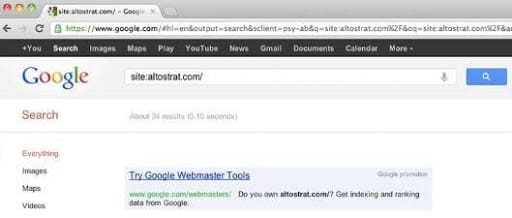
2.Submit your sitemap
A sitemap is a record of all the webpages on your website. It can help search engines find and understand all your site’s hosted content.
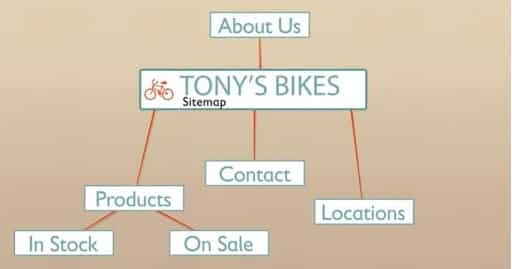 After creating your sitemap, submit it to Google Search Console and Bing Webmaster.
After creating your sitemap, submit it to Google Search Console and Bing Webmaster.
 3.Create a logical link structure for your website
3.Create a logical link structure for your website
What Google means here is that your small website should be easy to navigate.
Your website’s services page, about page, content pages, etc. should link to the homepage. Similarly, individual pages describing different services should all link to the main services page.
Be sure to follow the proper link structure as you continue adding more pages.
4.Remove broken pages and links
Broken pages, internal links, and outbound links are not good for your visitors. Likewise, they are certainly not good for your site’s SEO.
A broken page may have one valuable backlink from a website since it indicates a referring domain. Still, Google will not count it as a vote for your website as that link from a broken page leads to a dead end.
You can fix this by:
- Reinstating the dead page, especially if it was deleted by accident.
- Redirecting the dead page to a proper alternative either by a similar post or page or a new location of that page.
- Removing or updating outbound links.
5.Duplicate content
Duplicate content can wreak havoc to your small business website. Whether they are within your site or from other sites all over the web. Google wants you to avoid having duplicate content whenever possible.
Siteliner.com from Copyscape can help you quickly identify duplicate content within your site. Also, Copyscape itself can help you track which sites across the web have a similar copy of your content.
6.Develop a responsive web design
Your website’s responsiveness matters a lot. Why? Google also monitors how visitors interact with your website. Google has always been telling webmasters to provide a good user experience for internet users.
Consider these three factors of responsive web design.
- Functionality. Try not to sacrifice user experience over attractive web design. Your website should function the way it’s supposed to do.
- Navigation. When it comes to navigating your site, it’s better to have simpler navigation. It should be intuitive. Avoid giving your visitors too many choices.
- Load Speed. A study on an eCommerce website’s load speed by Kissmetrics showed that a delay of about 4 seconds or more can result in a significant loss of revenues.
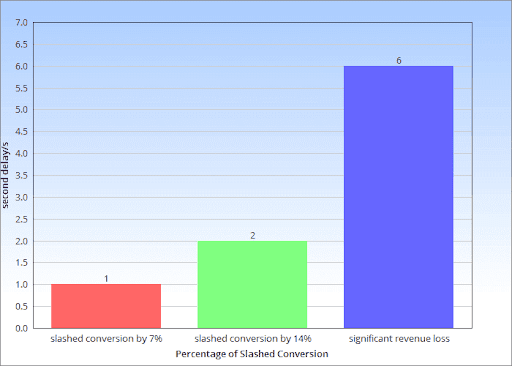
You can use Google’s Page Speed Insights to check your website’s load speed.
Here are other factors that affect the load speed of your website:
- Images and videos that have significant file size can affect the loading speed of a website.
You can fix this using image and video compression tools.
Tiny PNG and Compress JPEG/PNG are free online tools that compress images.
Likewise, Handbrake and Clideo are examples of video compression tools.
- Redirects are helpful when someone clicks to a page that has moved to another URL. However, using too many redirects can affect load speed. Use them sparingly.
7. Test for mobile-friendliness
Google may penalize your site if it’s not loading optimally on mobile devices. The stats below tell us why it’s now a necessity to optimize our websites for mobile devices.
- smartphone owners represent 80% of internet users
- more than 50% of internet searches take place on mobile devices
- about 60% of consumers won’t recommend websites with bad web design
Mobile Friendly Test is an online tool you can use to check for your website’s page speed on mobile devices.
On-page Optimization
On-page optimization takes a big part in your overall SEO campaign. With it, how your website performs in the search rankings is within your control. Thus, you should do your best with your on-page optimization efforts.
1.Set your target audience
Small business SEO is not solely about getting lots of traffic. It’s about getting the right traffic, which is the target audience looking for the products and services that you offer.
Bringing in the right people to your business equates to higher conversion rates.
2.Choose the right keywords
Once you have selected your target audience, you can now begin researching for keywords that you should rank for. Your keywords should also be closely related to the product or service that you offer.
Here’s a sample from Ubersuggest:
 The SD parameter means SEO Difficulty and the values range from 0 to 100. The lowest value indicates a keyword that’s easiest to rank while a higher value means it’s highly competitive.
The SD parameter means SEO Difficulty and the values range from 0 to 100. The lowest value indicates a keyword that’s easiest to rank while a higher value means it’s highly competitive.
3.LSI keywords
Latent Semantic Indexing (LSI) keywords are related words to your main keywords. To put it simply, if your keywords are “basketball shoes”, then your LSIs should be:
- Soccer shoes
- Running shoes
- Golf shoes
- Sneakers
- Chuck Taylors
- High tops, etc.
Google will penalize you if you put too many of your focus keywords in one article. The best way to do it is using LSIs across your articles.
4.Creating your outline
When choosing your topic, it’s important to consider what people are looking for. You’ll then need an outline to guide the flow of your article.
Google’s People Also Ask section is a great way to create an outline for your article.
What’s great about it is that it’s what people search for around a topic. And so, there’s a higher chance your article will show up in search when your subheadings match the search queries.
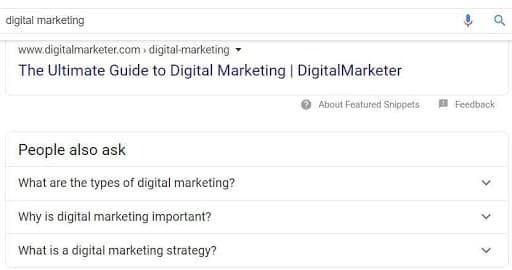 Also, you can use related keywords generated by an LSI generator as an outline for your article.
Also, you can use related keywords generated by an LSI generator as an outline for your article.
 5.Proper use of keywords
5.Proper use of keywords
This is where you strategically position your focus keywords across your article. Place your focus keywords a least once in the:
- Main heading or H1
- Introduction or within the first 100 words of your article
- Content body
- Subheadings
- Summary or Conclusion
- Meta title and in the
- Meta description
To avoid overstuffing of keywords, use related keywords in some of the subheadings.
6.Content best practices
There’s no use of giving helpful content that’s hard to read. Your article should be scannable and easy on the eyes. They should be easy to understand too.
Here are some tips to improve readability.
- Use one main heading and subheadings. They help break slabs of text and divide your article into sections. Subheadings help guide the flow in your article.
- Use short sentences, no more than 20 words long.
- Use 2 to 3 sentences in one paragraph.
- Use bullet points to avoid long sentences, especially when you’re enumerating more than three subjects/words.
7.Proper use links in the article
Outbound or external links are hyperlinks that point to other websites. They help save time and space (in your article) from explaining topics in which other websites already have the information.
It’s a good practice to only link out to authoritative websites. Your readers will trust you if your information comes from credible sources.
Internal links are hyperlinks used in the anchor texts of your article. They should point to pages within your website that are related to your topic.
8.Create enticing page titles and meta descriptions
You need to use enticing page or meta titles and meta descriptions for your article. What’s the use of creating great content when no one bothered clicking on your meta tags?
 Always include your focus keyword in the page title and there should be no more than 60 characters.
Always include your focus keyword in the page title and there should be no more than 60 characters.
Likewise, your focus keyword should appear in your meta description. The meta description should tell internet users what your article is about. The whole description should not be more than 156 characters.
 Social SEO
Social SEO
Social SEO is also important for small businesses. It’s a great way to gain initial traffic.
What to do?
- Start building your brand on social media.
- Leverage Facebook and other social media sites to show your commitment to customers.
- Your website content should be worth sharing with your followers.
- Also, curating and sharing other relevant website content is a great way to increase your followers.
Local SEO
Local SEO is Google’s way of rewarding small businesses to gain traction locally. In other words, your small business can now achieve greater visibility in your area.
To start reaping these rewards, apply local SEO strategies. In your metas, footer, and image alt titles — include your state and city.
Need Help With Small Business SEO?
SEO can help small businesses increase their visibility and improve their ranking. It’s just a matter of doing the right SEO strategy designed for small businesses. Reach out to us if you need assistance with small business SEO.
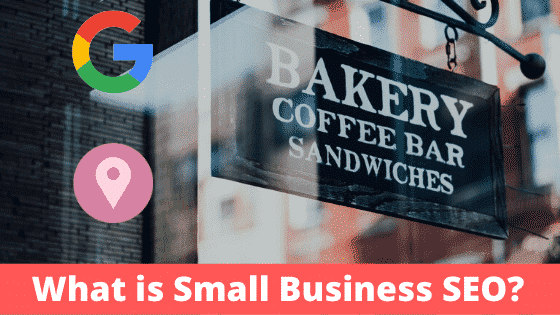
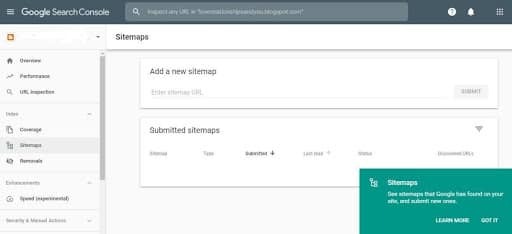 3.Create a logical link structure for your website
3.Create a logical link structure for your website 5.Proper use of keywords
5.Proper use of keywords  Social SEO
Social SEO